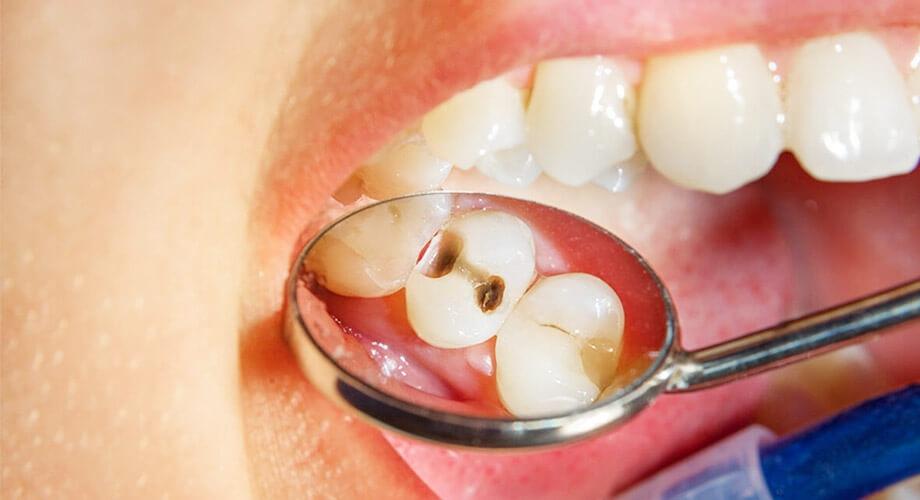
IF YOUR TEETH ARE NERVOUS, LET US CHEER THEM UP
Endodontics is the branch of dentistry that examines the caries going down to the tooth root and their treatments.
What is root canal therapy?
Root canal therapy is the procedure of removing blood vessel-nerve network in the tooth that feeds the tooth by holding on the jawbone with specially designed tools and filling the empty space with artificial filling materials.
Why do we need a root canal therapy?
The outermost part of the tooth is covered with the hard enamel tissue. Under the enamel tissue, the dentin layer and the pulp tissue surrounded by the dentin layer and having the nerves and blood vessels that feed the teeth are located. After the decay is formed on the enamel, it progresses in time due to saliva, food accumulation or excessive consumption of acidic and sugary food and reaches the pulp tissue, i.e. neurovascular network. The decay reaching to the pulp causes severe pain and the only solution is complete removal of the pulp infected by the decay from the tooth. The root canal therapy is applied to clean the pulp infected by the bacteria and decay.
When do we need a root canal therapy?
In complaints such as long lasting tingling after drinking cold or hot beverages, pains waking you up at night, pain while eating, feeling elongated teeth and not being able to bear upon the tooth because of pain, usually the root canal therapy is applied. In addition, the root channel therapy is administered to the tooth with abscess, tooth creating inflammation in the bone without pain and deep decays progressing without pain.
How long is the root canal therapy and how does the process work?
The root canal therapy can be applied in one session as well as two or three sessions, i.e. average one week. It depends on the inflammatory condition of the tooth. At the same time, location of the tooth and number of roots are also effective. Your dentist will decide. During the treatment, first decay is cleaned and nerves are removed. The channels hosting the nerves are shaped with rotary-head systems. Rotary-head systems provide a proper shape to prevent secondary decay formation and help complete purification of the tooth from bacteria. During these procedures, the canals are washed and cleaned with special liquids. Thus, they are freed from bacteria, and inflammatory, infected tissues. If a treatment that will end in one session has been decided, after washing, it is dried and the empty canals in the tooth are filled with artificial materials compatible the tooth tissues. If the root canal therapy will last two-three sessions, appointments are given at intervals of 2-3 days after closing with temporary fillings and dressing is applied in interim sessions. The root canal therapy is completed at the end of maximum 10 days. However, the root canal therapy cannot be finished until the inflammation in the teeth with abscess is completely cleaned. In such cases, the treatment may last a month.
What happens if the root canal therapy is not administered?
The decays reaching to the pulp affect the nerves in the pulp and cause heavy pain. At the same time, a pulp infected by the bacteria in the decay spreads these bacteria to the surrounding tissues through its vessels and cause inflammation, i.e. makes dental abscess. The abscess is filled with inflammation in time, and then blows and starts to leak to the oral environment. It is hard to save a tooth at this stage. Cleaning the abscess, i.e. inflammation completely takes time. It can go to swellings on the face and teeth losses. Therefore, root canal therapy is administered to the teeth with deep decays, it is ensured that the teeth stay in the mount for a while and pain is relieved.